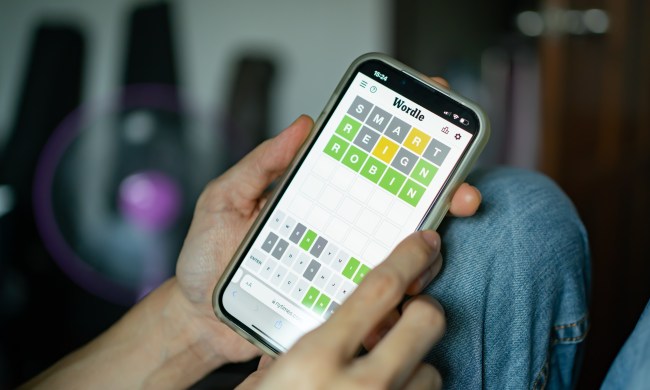Unlike previous Guitar Hero games where the background visuals featured your animated avatar rocking out on stage, Guitar Hero Live instead brings the camera on stage in order to turn the game into an immersive, live-action rock star simulator, augmenting the core mission of playing music with all of the thrills and anxiety that surround a live stage performance.
“What I think you don’t realize as a fan of people is that they’re nervous before they go on stage and they do get a bit of stage fright,” Jackson explained with regards to what FreeStyleGames is aiming to capture. “They don’t know which way it’s gonna go — are the crowd gonna be a good crowd or a bad crowd — and we wanted to try and deliver that and … almost complete the whole Guitar Hero experience.”
Every song in the game’s main mode was recorded with a live band and audience. So that the audience and band can respond dynamically to how well you perform, each song was recorded at least twice (probably even three times–it is not yet clear how many gradations there are between being worshiped as rock god and being driven off with torches and pitchforks). Filling the player’s role in these sessions was a large, mobile camera robot.
While the complicated recording process puts some hard limits on how much content can be put out for the main gameplay mode, Guitar Hero TV will fill in the rest with a huge range of playable music videos across many genres. FreeStyleGames is a music game studio first and foremost, with many of its members also playing in bands, and so it was important to them that the game encompass as wide a range of genres as possible beyond the traditional, guitar-based rock that has always grounded the series. Taking cues from online music services like Spotify and Pandora, Guitar Hero TV will also emphasize music discovery as a way to broaden players’ horizons.
All of FreeStyleGames’ changes to the trappings are exciting, but the studio’s central innovation is the redesigned guitar controller. Along the lines of the game’s general focus on rock star fantasy fulfillment, the new configuration of six buttons in two rows of three gives your fretting hand something to do that’s much closer to the experience of playing a real guitar (or at least an air guitar).
It also, crucially, alters the difficulty curve to allow for both an easier point of entry (no more having to use your pinky) and a higher skill cap at the top levels of play (more buttons and the added depth of a second row means that there are many more possible chord shapes for the game to throw at you.


